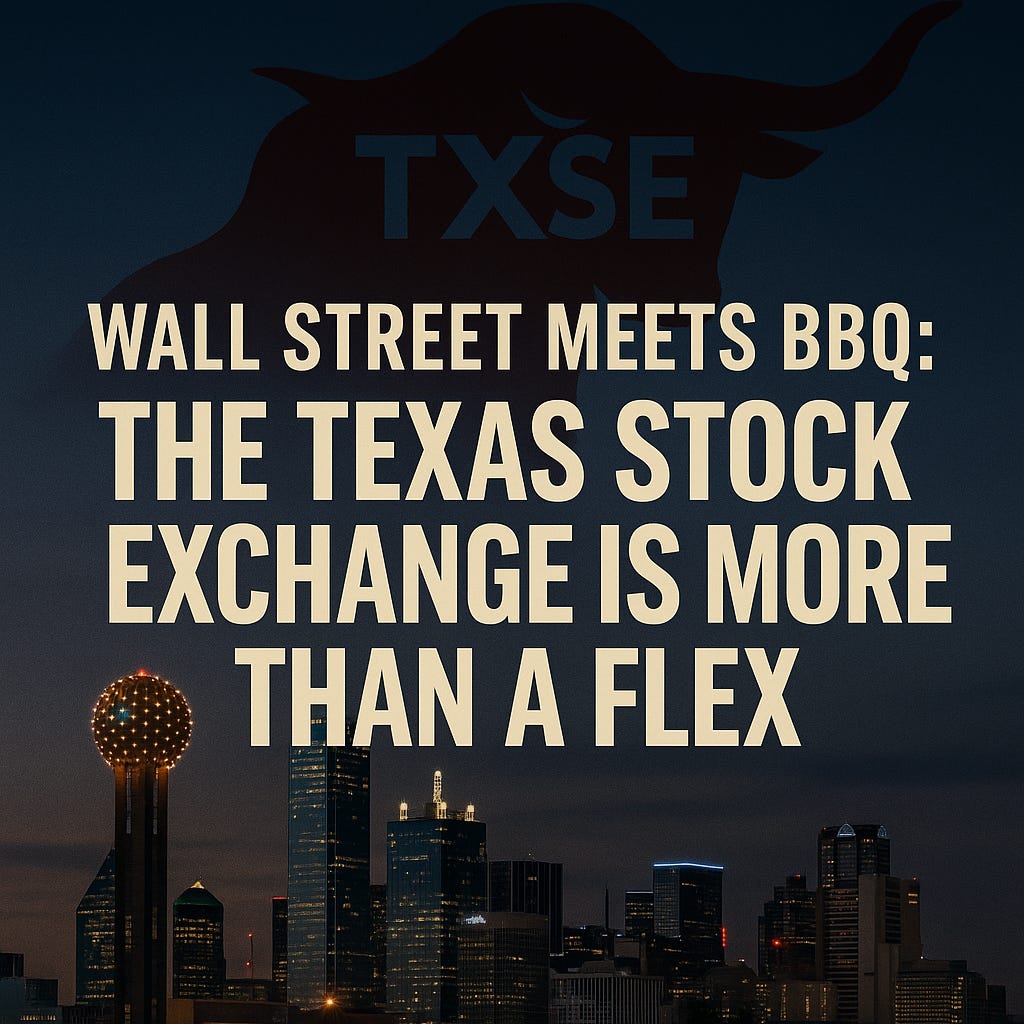The Texas Stock Exchange Is More Than a Flex — It’s a Signal
North Texas isn’t just in the headlines — it’s in the crosshairs of the capital markets.
The announcement of the Texas Stock Exchange (TXSE) sent shockwaves through both Wall Street and Main Street, and here in Dallas-Fort Worth, it landed like a well-timed mic drop. For decades, New York has been the unquestioned center of American finance. But as companies, talent, and capital have migrated south, it was only a matter of time before Texas asked a fair question: Why not us?
A new exchange with old-fashioned confidence
Backed by $120 million in funding from a consortium of major investors and led by seasoned market operators, TXSE plans to operate out of Dallas, listing companies that are tired of regulatory bloat and cultural noise.
To some, it sounds like a novelty. To Texans, it sounds inevitable. The state that’s long been known for oil, football, and barbecue is now adding IPO pipelines to the mix. We already have the infrastructure — airports that connect globally, data centers that hum nonstop, and an economy larger than most countries.
So when TXSE says it’s here to “modernize U.S. capital markets,” that’s not bravado — that’s simply Tuesday in Texas.
The real estate ripple effect
Let’s be clear: the TXSE isn’t just a story about finance. It’s a real estate story, too.
The Dallas core and surrounding nodes like Uptown, Legacy West, and Frisco are already tightening in office absorption. A functioning exchange here means more C-suite relocations, more high-wage talent, and ultimately, more demand for everything from office condos to mid-rise luxury rentals.
Developers are already scouting sites for financial firms and fintech startups who want to be close to “the new exchange.”
And let’s not forget — talent migration comes with traffic migration. When 200 new analysts and traders move into the metro, we feel it on 75 and 121 faster than you can say “rush hour in Plano.”
Why Texas, why now
The logic is simple:
Regulatory relief: Companies are fed up with one-size-fits-all coastal rules.
Business climate: Texas offers fewer taxes, faster permitting, and an open-for-business mentality.
Cultural fit: CEOs like the state’s pragmatic optimism — we solve, not sermonize.
And it doesn’t hurt that over 60 Fortune 500 companies now call Texas home. If capital follows confidence, we’re about to see a lot more of both.
Talent migration = neighborhood transformation
Every new firm that plants a flag here changes the texture of local communities.
In Plano, apartments are leasing faster than they can pour concrete. In Frisco, brokers joke that “every tenant has a New York accent now.”
Coffee shops in Uptown are hosting more pitch decks than lattes. It’s a subtle but significant signal: the financial migration has arrived, and it’s reshaping our neighborhoods as much as our markets.
The bigger signal: decentralization
The TXSE represents something larger — a shift from centralized finance to distributed opportunity.
In the same way that remote work decentralized tech, the TXSE could decentralize capital markets. It’s not about rejecting New York — it’s about balancing it. America needs multiple hubs of liquidity and innovation, and Dallas is perfectly positioned to lead that evolution.
Our take: this isn’t a flex — it’s a foundation
For North Texas, TXSE is both a symbol and a strategy. It tells investors what we already know: this region is no longer a “secondary market.”
We’re not waiting for the next big thing — we’re building it.
And if the rest of the country wants to know where the future of finance is trading, we can answer with the confidence only a Texan could:
Right here, y’all.

